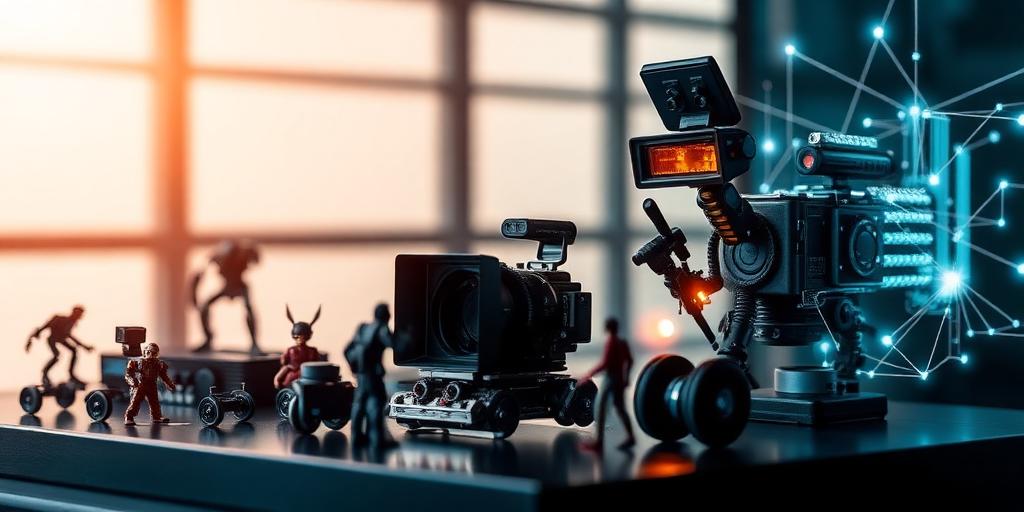In the annals of cinematic history, the debate between practical effects and computer-generated imagery (CGI) has long been a focal point for filmmakers and audiences alike. For decades, CGI reigned supreme, offering seemingly limitless possibilities to create fantastical worlds and awe-inspiring spectacles. Yet, a palpable shift is underway, as Hollywood increasingly embraces the tangible artistry of practical effects. This resurgence is not merely a nostalgic whim but a strategic recalibration, driven by artistic integrity, audience demand, and a recognition of CGI’s inherent limitations.
The Enduring Appeal of Tangibility
At the heart of the practical effects comeback in Hollywood lies the undeniable allure of the real. Audiences possess an innate ability to discern genuine physical presence from digital constructs. Explosions, intricate creature suits, expertly crafted miniatures, and stunt work performed on set carry a weight and authenticity that often eludes even the most sophisticated CGI. This tangibility fosters a deeper level of immersion; when an actor genuinely interacts with a physical prop or reacts to a real-world event, the performance gains an undeniable layer of conviction. Filmmakers are increasingly recognizing that the human eye, and by extension the human brain, responds differently to something that truly exists within the frame, enhancing the film's overall impact and credibility.
Navigating the Limitations of Pure CGI
While CGI offers unparalleled versatility, its extensive reliance has exposed several critical drawbacks. The “uncanny valley” phenomenon, where digitally rendered characters appear almost, but not quite, human, can actively detach an audience. Furthermore, the sheer cost and time involved in rendering complex digital sequences can be prohibitive, often leading to compromises in detail or artistic vision. Many productions have discovered that what appears to be a more efficient solution on paper—pure CGI—can lead to budget overruns and an artificial aesthetic that fails to resonate. This has led many to question the sole reliance on digital tools, prompting a renewed exploration into why practical effects are returning as a viable and often superior alternative.
Artistic Freedom and Enhanced Production Value
Beyond authenticity, filmmakers embracing practical effects benefit from a range of artistic and technical advantages. Practical elements anchor a scene, providing actors with real objects to interact with, thus grounding their performances. A monster suit, a meticulously built miniature set, or a controlled explosion provides an immediate, visceral reality that CGI must meticulously simulate. This approach often leads to more creative problem-solving on set, fostering innovation among effects teams. Moreover, when executed proficiently, practical effects can be surprisingly cost-effective practical effects in comparison to extensive digital post-production work, especially for repetitive shots or specific physical interactions. The result is often a richer, more textured visual experience, contributing significantly to a film's overall production value and aesthetic appeal.
Prominent Examples of a Shifting Paradigm
The evidence of this shift is manifest in a string of highly successful contemporary films that have skillfully integrated or predominantly featured practical effects. Denis Villeneuve's "Dune" captivated audiences with its enormous physical sets, meticulously designed creature suits, and vast miniatures, blending them seamlessly with targeted CGI to create an expansive, believable world. Christopher Nolan's filmography consistently champions on-set stunts and model work, enhancing the realism and impact of his narratives. Franchises like "Mission: Impossible" continue to push the boundaries of real-world stunt work, while George Miller’s "Mad Max: Fury Road" serves as a masterclass in combining practical vehicles, pyrotechnics, and stunts with digital enhancements to achieve unparalleled kinetic energy. These modern films practical effects demonstrate that the industry is recognizing the power of the tangible.
The Future: A Harmonious Hybrid Approach
The resurgence of practical filmmaking does not signal the demise of CGI. Rather, it indicates a maturing industry that understands the optimal deployment of each tool. The most compelling cinematic experiences often arise from a blending practical and digital effects, where CGI is used to enhance, augment, or fill in gaps that practical methods cannot achieve, rather than attempting to create everything from scratch. This hybrid approach leverages the strengths of both methodologies, delivering the best of both worlds: the raw, visceral impact of practical effects combined with the expansive possibilities of digital artistry. The trend clearly demonstrates that Hollywood is rediscovering the profound resonance that genuine physical spectacle brings to the silver screen, solidifying practical effects’ essential role in crafting immersive and memorable cinematic narratives.









